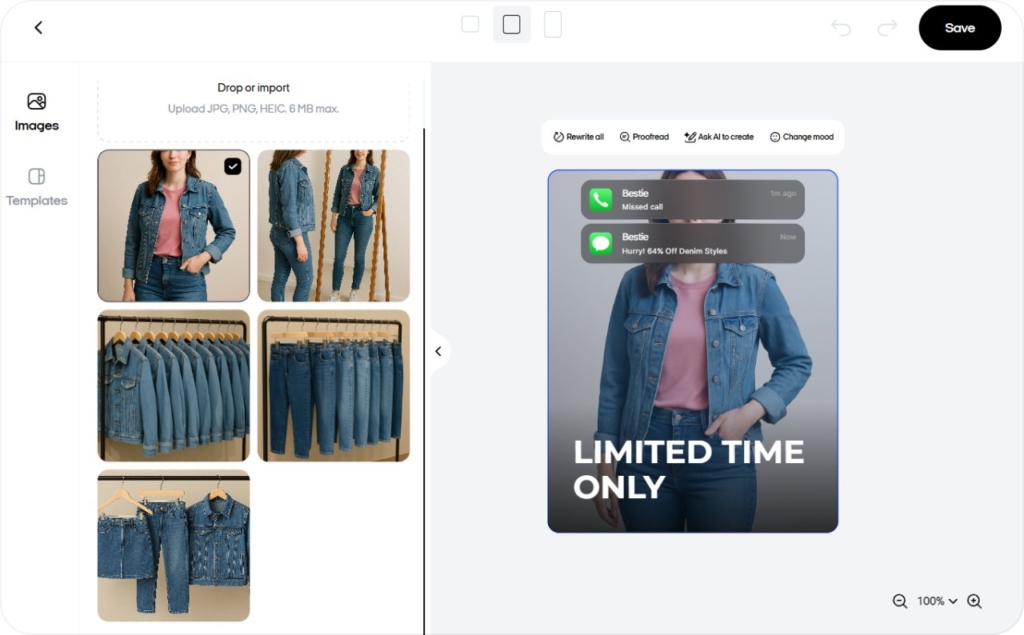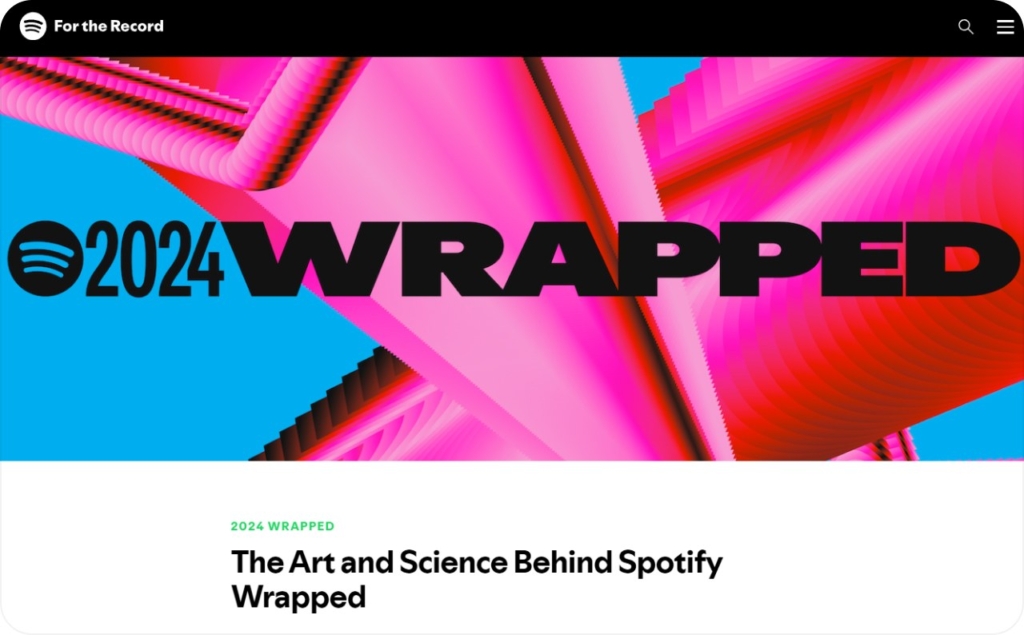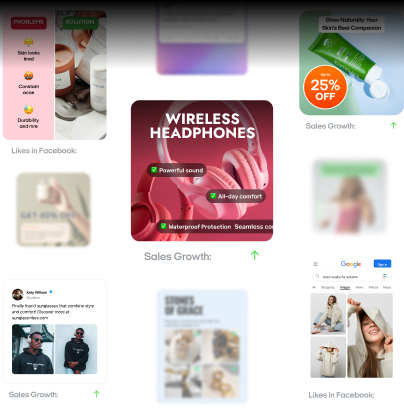Targeted digital advertising: Your ultimate guide to nail precision in ads
Want every ad you run to reach the perfect audience? Zeely AI uncovers how targeted digital advertising works, with proven strategies to maximize precision, reach, and ROI.
If you’re looking for a targeted digital advertising definition that goes beyond buzzwords, this is your intro to digital ad targeting. In a world where digital marketing moves faster than ever, it’s easy to pour money into generic ads that never truly connect.
Targeted digital advertising changes that game by leveraging data-driven marketing insights, audience segmentation, and programmatic advertising to pinpoint the exact users who are most likely to convert. Think of it as matchmaking, but for your brand and your ideal customers, where you’re not just speaking at people, you’re speaking to them.

What is targeted digital advertising?
Targeted digital advertising focuses on ad personalization and conversion optimization through precise use of data, including demographics, browsing behavior, and even intent signals drawn from NLP-driven tools. By aligning your ads with genuine customer needs, you reduce wasted clicks and grow your marketing ROI.
PwC’s Global AI Study shows targeted ads can deliver a 44% higher ROI compared to non-targeted ones, while McKinsey reports that personalization can produce 5-8 times more return on marketing spend, lifting sales by 10% or more.
Why it matters for your bottom line
Generic ads aren’t just a nuisance for viewers, they’re a drain on your budget. By switching to targeted strategies, you’ll see measurable gains in ROI measurement and a clearer customer journey.
When you segment users accurately and deliver personalized ads that resonate, you tap into digital ad trends that drive tangible outcomes. Whether your goal is lead generation, brand awareness, or direct sales, this approach ensures your spend goes where it counts.
What you’ll learn here
In this guide, you’ll discover how to implement programmatic ads, refine your audience segmentation, and measure success through ROI measurement metrics. You’ll also learn about data-driven marketing best practices, ad personalization tactics, and the future of digital ad trends in an evolving landscape.
If you’re ready to transform your campaigns from broad strokes to laser-focused brilliance, let’s dive into the ultimate resource on targeted digital advertising, where every impression has a purpose and every click counts.
What is targeted digital advertising?
As we have already mentioned, targeted digital advertising is a strategic way to reach the right people by leveraging demographic targeting, behavior targeting, and interest segmentation. Instead of blasting one-size-fits-all ads, you customize your message to match each group’s specific needs. Think of it like matchmaking for your brand — your ads connect with the very viewers who are already looking for solutions you can provide.
This approach relies on customer profiling and data-driven marketing, which means you collect and analyze user data such as browsing habits, geographic locations, and purchase histories. Tools like Google Analytics 4 or CRM systems help you gather insights, while machine learning and predictive analytics fine-tune your targeting.
By focusing on actual user behavior, you boost ROI and cut down on wasted ad spend. It also benefits your audience, since they’re more likely to see ads relevant to their genuine interests instead of random pitches.
Opting for this method pays off because programmatic advertising and ad personalization help you connect with potential customers who are already primed to engage. When people see ads that speak directly to their needs, they’re more likely to click, share, and eventually buy. By the time they make a purchase decision, your brand has become a trusted resource in their eyes.
How targeted digital advertising works
Targeted advertising follows a logical, data-focused sequence that ensures your ads reach people who care.
First, you gather first-party data through tracking pixels, newsletter sign-ups, or CRM records to learn about users’ demographics, interests, and online habits. Then, platforms like Meta Ads or Google DV360 rely on machine learning to analyze that data and highlight different audience segments, such as frequent shoppers or first-time visitors.
With these segments in hand, you can tailor creative elements, headlines, and offers to each group. If you sell eco-friendly products, you’d showcase sustainability for environmentally conscious buyers. That level of personalization makes your ads feel less like intrusive pitches and more like relevant suggestions.
You then refine your strategy with AI-optimized retargeting, which predicts user behavior and delivers hyper-personalized messages. According to Search Engine Journal, this tactic can boost conversion rates by as much as 147% compared to generic ads. Higher conversion rates translate into lower cost per acquisition and a better return on investment, proving that every ad dollar works harder for you.
Finally, you monitor key metrics, like click-through rates and overall campaign performance, to pinpoint what resonates. If conversions dip, you can adjust targeting settings, test new ad copy, or tweak visuals to keep results on track. This ongoing improvement cycle ensures your campaigns stay relevant and profitable, making targeted digital advertising a standout strategy for today’s competitive online landscape.
Types of targeted digital advertising
Geographic and demographic targeting
Geographic and demographic targeting is a foundational method in digital advertising strategy that helps marketers refine their campaigns based on user location and audience characteristics.
Geographic targeting, or geo-targeting, enables you to serve ads to people in specific regions, cities, or postal codes. For example, a local café might promote a lunch deal to users within a two-mile radius during peak hours. Demographic targeting, on the other hand, segments users by age, gender, income, or education, allowing for campaigns that speak to distinct customer personas.
This type of location-based digital advertising improves local relevance, ensuring ads are shown to users who are both physically able and statistically likely to engage. For instance, a premium skincare brand could target women aged 35–50 in urban areas with higher spending power, using demographic segmentation to maximize conversion potential.
To further refine reach, advertisers often combine geo/demographic filters with Remarketing Lists for Search Ads or RLSA, which is a powerful tool in Google Ads that allows you to bid more on returning users searching relevant terms. However, over-segmentation can reduce impressions and drive up CPM, so marketers should balance market segmentation with broader visibility.
Behavioral and interest targeting
Behavioral and interest targeting takes personalized marketing a step further by analyzing a user’s online behavior, purchase intent, and interest categories.
Behavioral targeting segments users based on actions, such as viewing product pages, abandoning carts, or time spent on specific content. Interest-based targeting, meanwhile, uses affinity audience data, like Google’s 80+ predefined groups to target users based on long-term preferences.
This form of user behavior segmentation enables predictive personalization. For example, a user who repeatedly visits your fitness tracker page and follows wellness blogs is likely to respond to performance-driven product messaging. Advertisers can use RLSA to reconnect with these users through customized search ads when they’re actively searching again.
Platforms like Google Ads and Meta make this easy by combining behavioral insights with predictive analytics, allowing advertisers to track, segment, and personalize in real time. By aligning ad content with users’ intent signals and browsing history, marketers create ads that resonate deeply, leading to stronger engagement and improved conversion rates.
Keyword and contextual targeting
Keyword and contextual targeting are critical tactics in search and display advertising that match ads to relevant queries and content environments.
Keyword targeting places ads based on exact or phrase-match terms users enter in search engines, such as “eco-friendly water bottles” or “affordable dog grooming near me.” This aligns ads with high purchase intent and direct relevance.
Contextual targeting, by contrast, focuses on the semantic relevance of the content where your ad appears. Using metadata and semantic keyword analysis, ad platforms scan web page content to ensure your offer fits organically. For example, an ad for hiking boots might appear on an article about outdoor survival tips, enhancing both content-product alignment and user experience.
When used together, these methods increase both CTR and ad performance. Advertisers often enhance this strategy with RLSA, bidding more on returning users who are actively searching or visiting contextually related content. Proper use of semantic keywords, content relevance, and ad placement strategy ensures ads appear not just where they’re seen, but where they’re needed.
Device and platform targeting
Device and platform targeting allows advertisers to customize ad delivery across various devices: mobile, desktop, tablet, connected TV, and digital platforms: social, in-app, streaming. This method is crucial for ensuring your ad creatives are tailored to how users consume content — on the go or at home, with different attention spans and content expectations.
For instance, a mobile user scrolling Instagram might respond best to a 10-second vertical video, while a desktop user on YouTube might prefer a long-form demo with click-through annotations. By optimizing for cross-device engagement, marketers create more cohesive and conversion-driven journeys.
Platform-based ad targeting lets you craft campaigns for specific environments, like showing interactive ads in gaming apps or immersive video ads on connected TVs. Paired with RLSA, you can retarget users based on their previous device behavior, adjusting creative formats accordingly.
Marketers should monitor metrics like bounce rate, engagement, and device-specific conversions to fine-tune their multi-channel strategy. With more than 70% of digital engagement happening on mobile, investing in mobile-first campaigns and platform-aware creative is essential to staying competitive.

AI-based predictive targeting
AI-based predictive targeting is the most advanced form of automated ad optimization, using machine learning algorithms and data-driven forecasting to serve ads based on future user behavior. Rather than reacting to past actions alone, predictive targeting anticipates what users are likely to do next, such as visiting a product page, signing up for a trial, or completing a purchase.
This strategy analyzes first-party data, including browsing patterns, shopping timelines, and cross-device behavior, to rank user intent and target those most likely to convert. It’s particularly effective in a privacy-first advertising environment, as it relies on anonymized trends rather than personal identifiers.
Platforms like Google Ads integrate predictive modeling into campaign workflows. Advertisers can combine these insights with RLSA to serve custom offers to past site visitors just as they enter the high-intent phase of the funnel. For example, if someone viewed your pricing page three times in one week, AI might trigger a discount code or urgency-based CTA.
Use of predictive targeting has shown measurable impact, often lifting conversion rates by 15–40% when paired with dynamic creative and intent-driven bidding. For marketers seeking sustainable scale, AI advertising provides smarter budget allocation, adaptive messaging, and a seamless way to evolve targeting as user behavior shifts.
Benefits of targeted digital advertising
Targeted digital advertising help you speak to the right people with the right message at the right time. The result? Better performance, lower costs, and a customer experience that feels more personal than promotional.
Performance that speaks for itself
Let’s talk numbers. Targeted ads don’t just improve visibility, they drive results. Brands using segmented campaigns have seen up to a 760% increase in revenue, according to WordStream.
Invesp reports that click-through rates can improve by up to 200% when you stop casting a wide net and start narrowing your focus. And with better conversion tracking, you can see what’s actually working and optimize in real time. Gartner even notes that tracking performance data leads to more successful lead generation and smarter budget decisions.
Personalization that drives engagement
But performance isn’t the only win. Personalization is a major reason why targeted ads stand out. A 2024 survey by Statista found that seven out of ten consumers liked receiving recommendations based on their past purchases. That means users want ads that recognize their preferences and not generic banners that miss the mark.
Whether you’re retargeting someone who added to cart but didn’t buy or tailoring creative to match a customer’s interests, personalization leads to better engagement and stronger brand loyalty.
Smarter spend, better results
Targeting also makes your budget work harder. When your ads reach the right audience, you avoid paying for impressions that don’t convert.
Instead of wasting ad spend on cold traffic, you can focus on people who’ve already shown interest, like returning visitors or users who searched for your product category. Tools like RLSA let you reconnect with these audiences when they’re ready to take action, making your path to conversion shorter and more efficient.
At the end of the day, it’s not just about lowering your cost-per-click, it’s about building campaigns that resonate. With the right targeting strategy, you gain better insights, boost ROI, and give your audience a reason to pay attention. In a crowded digital space, that kind of precision is what sets your brand apart.
Best practices and strategies of targeted digital advertising
Data collection and audience building
Building a high-performing ad campaign starts with a strong data collection strategy. Today, that means prioritizing first-party data over outdated third-party cookies. First-party data gives you direct access to user behavior and intent while staying compliant with current privacy regulations like GDPR and CCPA.
To get started, implement tracking pixels across your website to capture key engagement signals, such as page views, session duration, form submissions, and conversions. Then use Google Analytics 4 or a customer data platform, a CDP, like Segment or Adobe Real-Time CDP to centralize these interactions and build privacy-compliant customer profiles.
These platforms help you integrate and analyze your data across channels, turning basic interactions into actionable audience segmentation insights. For example, you can segment users based on shopping history, product interests, or funnel stage. This enables ad personalization, improves targeting relevance, and increases ROI by reducing waste on low-intent audiences.
Effective data strategies also require transparency. Let users know what you’re collecting and why, and ensure every step aligns with data compliance standards. When you combine clean, consent-based first-party data with a solid segmentation plan, you unlock higher engagement, better performance, and a more sustainable approach to customer acquisition.
Channel and device optimization
Optimizing a digital ad campaign means more than just picking the right message. It means placing that message on the right device and channel at the right time. Consumers move fluidly between smartphones, desktops, in-app environments, and connected TVs. If your campaigns don’t follow them, you’re leaving results on the table.
Start by analyzing device-specific engagement using cross-device analytics tools like GA4, Adjust, or AppsFlyer. Look for patterns: Are users clicking through on mobile but converting on desktop? Are connected TV campaigns increasing top-of-funnel awareness? This data helps you map performance by device and adjust your spend accordingly.
Next, align your creative to the channel format. For mobile advertising, focus on short, vertical video with immediate calls to action. In in-app targeting, keep things simple — users scroll fast. On desktop, provide more context and conversion opportunities, like forms or live chat. On streaming platforms, go visual and brand-focused to match the lean-back behavior of viewers.
A well-executed multi-channel strategy allocates your budget toward the channels that deliver the strongest engagement and conversion metrics. When you optimize creative by device and monitor channel performance closely, you increase relevance, reduce friction, and improve campaign results across the board.
Avoiding hyper-targeting and over-segmentation
As powerful as targeting can be, going too narrow can hurt more than it helps. Hyper-targeting and over-segmentation may increase short-term relevance, but they often reduce scale, inflate CPMs, and lead to underperforming campaigns.
Over-segmentation happens when you apply too many audience filters, like combining detailed demographics with behavior, device type, and zip code. While precision sounds appealing, it often leaves your campaigns with tiny audiences that can’t deliver statistically significant results.
To avoid this, focus on balanced ad targeting strategies. Use broader interest categories or lookalike audiences to scale without losing relevance. Start with primary filters, such as age, gender, and location, then add one or two behavior or interest signals. Avoid stacking more than necessary unless you’re working with very large datasets.
Broad targeting also helps you stay within user privacy limits, especially as regulations tighten. The more data you require to build an audience, the more you must prove consent and compliance. Use real-time performance data to guide your targeting decisions. If you notice your CPM rising or impressions dropping, it may be time to widen your net.
In short, targeting balance ensures your ads stay effective without becoming invisible. You’ll maintain reach, protect budget efficiency, and still deliver personalized messaging where it matters.
Retargeting and re-engagement strategies
Retargeting is one of the most effective ways to recover lost traffic and turn interest into action. When users leave your site without converting, re-engagement strategies can bring them back through personalized, timely messaging.
Begin with abandoned cart recovery ads. These remind users of what they left behind and offer incentives like free shipping or limited-time discounts to push them toward purchase. Tools like Google Ads, Meta’s Custom Audiences, or email platforms like Klaviyo allow you to automate this process based on real-time triggers.
Beyond that, expand your reach with lookalike audiences built from your highest-value customers. This lets you scale re-engagement without sacrificing intent. Use different formats, carousel, video, static, based on platform norms and user behavior. Rotate creative every few days to avoid ad fatigue and test what drives the highest conversion funnel progression.
Measure success by tracking key performance indicators like CTR, CPA, and return visits. Use campaign attribution tools to understand which re-engagement touchpoint closes the sale. When done right, retargeting not only boosts conversions — it builds brand familiarity, shortens the buying cycle, and strengthens long-term customer loyalty.
Future trends in targeted digital advertising
The future trends in targeted digital advertising revolve around AI-powered strategies, cookie deprecation, and privacy-first regulations.
If you still rely on third-party trackers and guesswork, now’s the time to embrace next-generation methods like machine learning in advertising, predictive analytics, and first-party data collection.
AI and predictive targeting: What’s already here
Major platforms like Google and Meta now rely on machine learning algorithms to automate bidding, create predictive targeting models, and refine creative in real time.
Tools such as Google’s Smart Bidding, Meta Advantage+, and Predictive Audiences in GA4 or Klaviyo use each interaction to forecast user intent and tailor ads accordingly. It’s a leap forward from reactive marketing, like upgrading from a rotary phone to a smartphone.
Keep in mind, though, that AI-driven tactics thrive on large datasets. Smaller brands might need to gather more first-party data before they see exponential gains.
Privacy sandbox and cookie deprecation in advertising
With third-party cookies set to disappear by the end of 2024, cookie deprecation is quickly becoming a central concern in digital innovation.
Google’s Privacy Sandbox aims to replace user-level tracking with anonymized “Topics” or “FLEDGE” cohorts, helping advertisers respect user privacy while maintaining a level of personalization.
For marketers, that means relying less on broad third-party trackers and more on first-party data — captured through CRM systems, email subscriptions, or direct site interactions. While your targeting precision may evolve, these privacy-first strategies foster compliance, build user trust, and open the door for more transparent programmatic advertising.
Programmatic evolution and disruptive innovation
As privacy regulations tighten worldwide, programmatic advertising tools are adding predictive modeling and real-time optimization to meet both advertiser needs and compliance demands.
This disruptive innovation eliminates guesswork by automating everything from audience segmentation to creative rotation. Yet, it also requires a responsible approach to data compliance and user consent. Collect only what you need, store it securely, and communicate your data practices openly. This isn’t about checking a box — it’s about embedding trust into your brand’s DNA.
A timeline for transition
Plan now for the end of 2024, when most third-party cookies vanish. You have under a year to pivot toward first-party data solutions, integrate privacy regulations into your tech stack, and align your ads with AI digital ad trends. Delaying could leave you scrambling when cookie deprecation hits and privacy-first strategies become the norm. Whether you’re a global enterprise or a fast-growing eCommerce venture, swift action ensures you won’t be left behind.
Case studies and real-world examples of targeted digital advertising
The following real-world advertising case studies highlight how brands use audience segmentation, retargeting, and personalized campaigns to improve conversion rates, strengthen the customer journey, and achieve measurable performance across multiple platforms.
Grace Consulting – Location-based recruitment targeting on social media
Grace Consulting, a global staffing agency, improved lead quality by launching geo-targeted ads on Facebook and Instagram. After optimizing social profiles with relevant job descriptions and customer reviews, they created region-specific campaigns that drove higher engagement. Social media messages and feedback forms replaced static landing pages, streamlining the conversion process.
Boots UK – Multi-channel campaign for price-conscious consumers
Boots launched its “Best for Less” initiative using cross-channel targeting on social, email, and in-store promotions. The campaign generated an 11.7% increase in offline sales and a 28.9% boost in e-commerce.
Hestan Culinary – Programmatic ads for a niche buyer journey
High-end cookware brand Hestan used programmatic advertising to serve personalized catalog and native ads to cooking enthusiasts. The campaign increased conversions by 218% and pushed ROAS from 1.91 to 9.20.
Stella Artois – Weather-based contextual ad delivery
Stella Artois Cidre integrated real-time weather data into its ad platforms to deliver cider promotions only during warm, sunny conditions. This hyper-contextual ad strategy led to a 65.6% YoY sales increase and a 50% reduction in wasted impressions.
Spotify – Behavioral data for personalized content campaigns
Spotify’s annual “Wrapped” campaign transformed user data into highly shareable playlists and visual recaps. This personalized marketing strategy drove a 31% surge in social mentions and a 21% uptick in website traffic.

Photo source: Screenshot of Spotify
LockNLube – Multi-platform targeting for product visibility
LockNLube saw 54% YoY revenue growth by optimizing product listings and running targeted ads across Amazon, eBay, TikTok, and YouTube. They leveraged competitor keywords, creative customization, and cross-device targeting to maximize engagement.
Each targeted digital advertising case study showcases how real businesses achieved measurable success by aligning strategies with audience behavior and campaign intent. Whether through conversion optimization, retargeting success, or multi-channel ad delivery, the proof is clear: data-informed advertising consistently outperforms generic campaigns.
If you’re mapping your own strategy, consider which of these best practices align with your funnel goals. Analyze your campaign metrics, invest in tools that support real-time segmentation, and test strategies like dynamic retargeting or contextual ad delivery. These real-world ad examples don’t just illustrate what’s possible — they reveal what’s replicable in today’s ad landscape.
Final thoughts
Let’s face it — targeted digital advertising isn’t optional anymore. It’s the foundation of every high-performing marketing strategy today. Whether you’re refining audience segments, embracing AI-driven targeting, or prepping for a cookieless future, the key is to act with intent, not guesswork.
So, what should your next steps look like? Here’s your quick campaign roadmap to turn insights into action:
- Start with clean data. Use tracking pixels and analytics tools to build privacy-compliant, first-party data profiles
- Segment smartly. Group audiences by behavior, intent, and engagement history. Then deliver messages that speak to their real needs
- Personalize everything. From email to AI display ads, make sure your content feels timely, relevant, and personal
- Test and optimize. Run A/B tests, monitor conversion metrics, and tweak your ad creative and placement strategy
- Future-proof your stack. Integrate tools that support predictive targeting, programmatic buying, and compliance with privacy-first regulations
Throughout this guide, we’ve explored the full funnel — from strategy and segmentation to retargeting success and real-world case studies. The common thread? Ads that perform share three things: relevance, timing, and a data-backed delivery strategy.
So now, it’s your move. Bring the strategy. Bring the segmentation. Bring the smart tech. And most of all — let your ads do the talking… data style.
Also recommended



